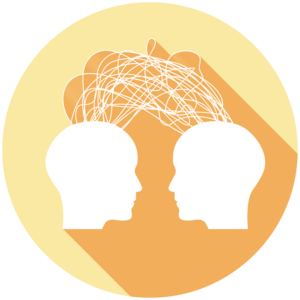The influence of emotions induced by marketing is even bigger than you think
Relevant topics Archive, Advertising
Did you know that when you’re in the grocery store picking out a bottle of wine, the music that is playing can influence your choice? If you follow our posts closely you probably did. But either way, get ready to dive a little deeper into what influences you (and your customers) subconsciously.
First, back to the wine. A famous example in neuromarketing research shows how playing French or German music in a store can influence the wine they sell. In this experiment, on days the store played French music they sold significantly more French wine. On days the store played German music… Well, you can guess where this is going. But why does this happen?
How are people so easily influenced by external factors? For the wine example, a possible explanation is that music from a specific country elicits positive memories and emotions related to that country and those emotions guide choices. I imagine French music would have a very strong influence on me in a situation like this, amongst others thanks to the amazing ski areas in the French Alps.
Emotional contagion
In the case described above, the external stimulus, i.e. the music, is paired with the product in the store environment. This is an example of the concept of emotional contagion: the emotions related to the stimulus transfer to the product or brand. This is not news to neuromarketers.
Emotion is a very popular marketing tool. Think of commercials simply showing a car driving on deserted, curvy roads surrounded by nothing but nature. What the research we’ll look at now shows is that the use of emotion can even have an effect on other (unrelated) brands that are presented nearby.
The emotions people experience are important in decision-making, these emotions are used as a source of information when making judgments. Which means that emotions influence evaluations of things like advertising, brands, products and services. It has now been shown that emotional stimuli not only influence the brands they are actually linked to, but these contagion effects can actually extend to brands presented nearby. If that car commercial you just read about elicits positive emotions for you, this can positively affect your evaluation of the product in the next commercial.
Even if it is simple dishwashing detergent.
Newneuromarketing is looking for new authors! Are you up for the job?
Send us an e-mail at tim@newneuromarketing.com to become an author and start spreading knowledge.
How to use these findings
As an advertiser, think about emotions evoked by the TV-show your advertisement is connected to. Or even other commercials before or after yours. The same holds for print ads and display advertising on the web. Anything presented near your advertisements can potentially impact the evaluation of your brand. Try to gain as much control over the placement of your advertisements as you can and use this knowledge to your advantage.
As a retailer, think about the products you place close to each other in your store. For example, newspaper and magazine headlines are often written to provoke emotion. And newspapers and magazines are often placed near the store checkout.
However, any negative headlines can negatively influence sales of other impulse-buying items close to that same checkout. Consider isolating products that bring about negative emotions. And use products that trigger positive emotions to boost other products by placing them nearby.
Conclusion
The fact that emotion is a powerful tool in neuromarketing was already known. This research shows how that power even extends to unrelated products and brands that are presented close to the target brand. Think about how you can control placement of your advertisements and products and how you can use this knowledge to your advantage.
Further Reading
-
Advertising 2.0 - How To Boost Ad Effectiveness Using Environmental Targeting
Personally, I think the most fascinating thing about neuromarketing is that in this field of science findings are again and again surprising and counterintuitive. A recent study by Andrews, Lou, Fang and Ghose (2015) is another example of this phenomenon. But let’s take a step back first.


